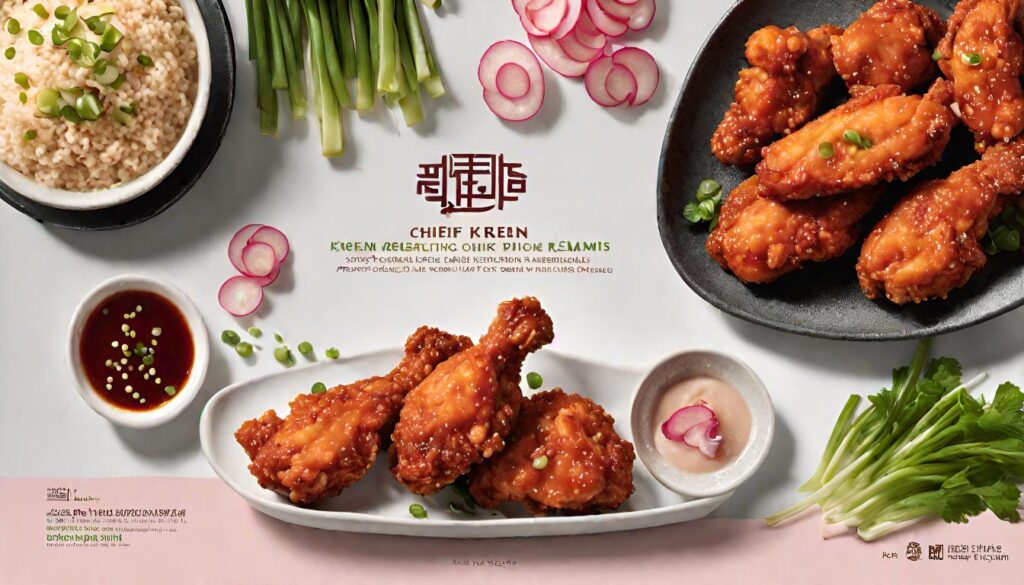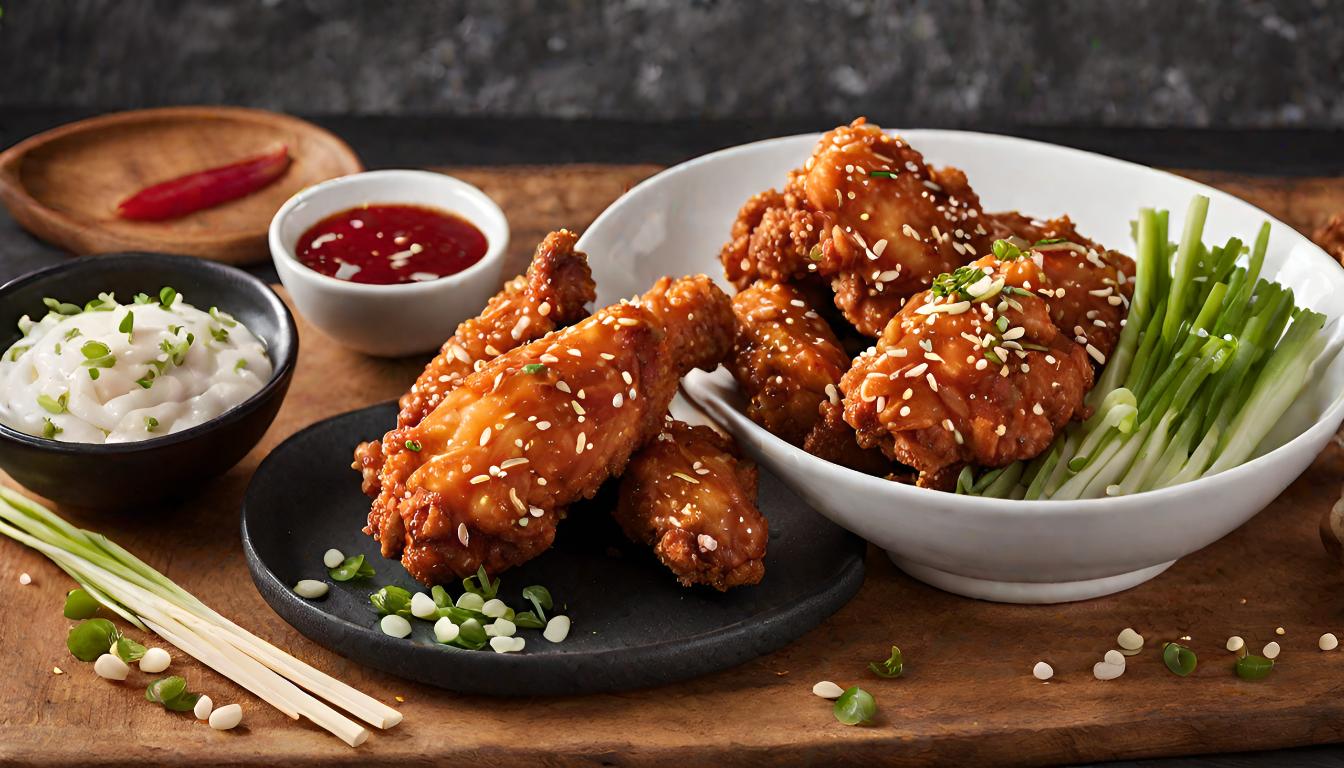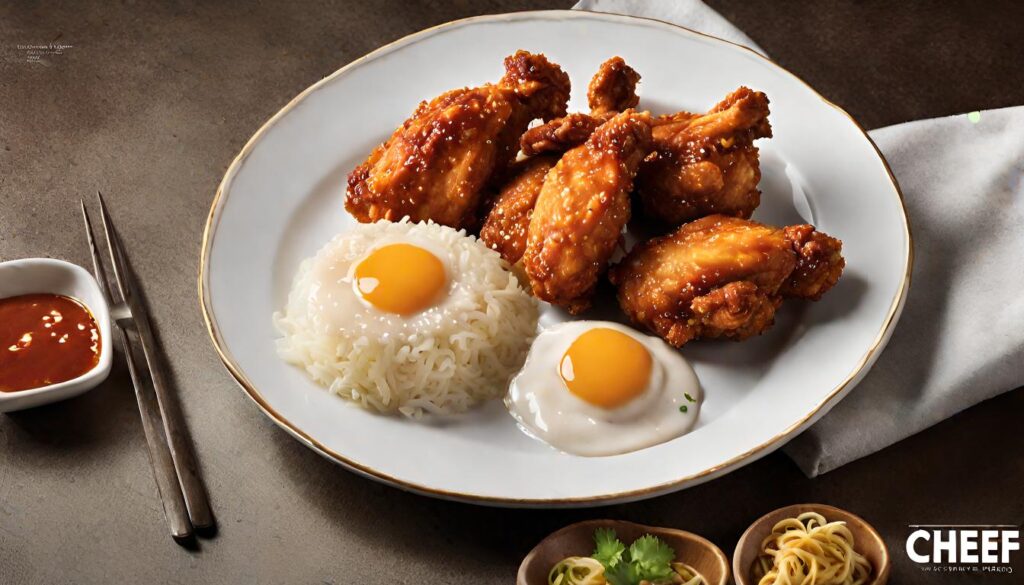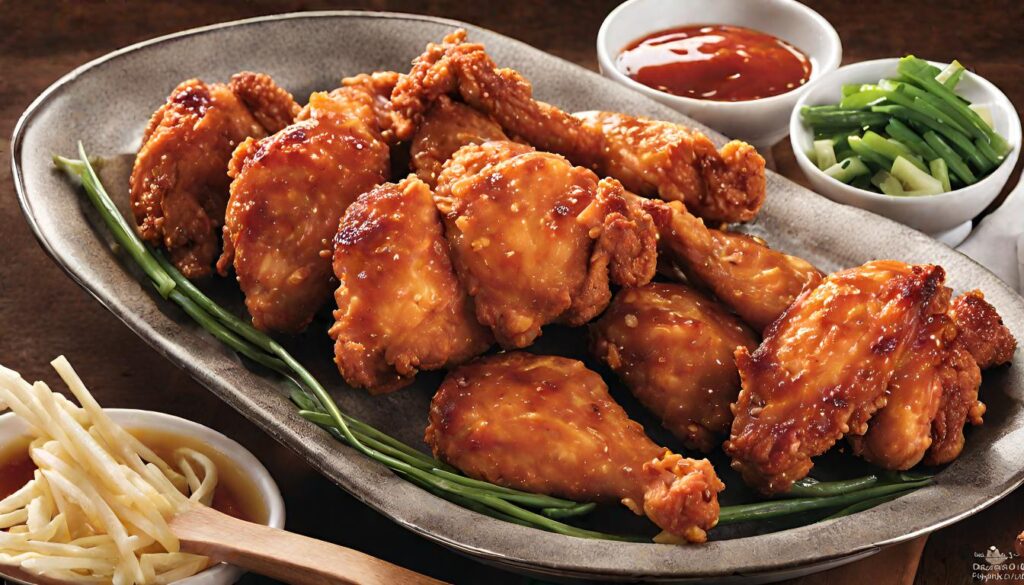Korean Fried Chicken: A Crispy, Flavorful Delight
In the world of fried chicken, Korean fried chicken has carved out a unique and tantalizing niche. Known for its crispy texture and rich flavors, this dish has become a global sensation. From the streets of Seoul to restaurants worldwide,It, often referred to as “KFC,” brings a delightful blend of crunch, spice, and sweetness to the table. This article dives into the secrets of making authentic Korean fried chicken, exploring the best ingredients, techniques, and flavors that make this dish so irresistible. Whether you’re a seasoned chef or a curious foodie, you’re in for a treat!
Introduction
Korean Fried Chicken, a star in the culinary universe, stands out with its unique preparation and irresistible flavors. Unlike its Western counterpart,It, affectionately called “KFC” in South Korea, boasts a double-fried exterior, ensuring a crispy and crunchy texture. Its roots trace back to the 1960s, evolving into a beloved staple in Korean cuisine. What really sets it apart is the art of double frying, combined with a range of mouth-watering sauces, from the classic spicy gochujang to sweet and tangy soy garlic. This dish is more than just food; it’s a cultural phenomenon, often enjoyed with beer or soju, making it a perfect social meal.
Part 2: Preparing the Chicken
Types of Chicken Cuts for Korean Fried Chicken
The versatility of Korean fried chicken allows for various cuts. While some prefer traditional whole chicken, cut into pieces, others opt for wings, drumsticks, or even bite-sized chunks of boneless chicken breast. The choice of cut impacts not only the flavor but also the cooking time, so adjust accordingly.
Marinating Techniques
Marinating is key to infusing deep flavors. Typical Korean marinades blend salt, ginger, and garlic. For an extra tender and juicy result, some recipes suggest soaking the chicken in milk before marinating.
Brining Options
Brining, especially popular in Korea, involves soaking the chicken in a flavorful solution, often overnight. This step enhances the meat’s moisture, ensuring it remains succulent even after frying.
Seasoning Choices
Simple yet effective, the seasoning often includes salt, pepper, and ginger. The trick lies in allowing the chicken to rest with these seasonings, ideally for a couple of hours, to deepen the flavor profile.
Each step in preparing the chicken plays a crucial role in creating the final, delectable product that is Korean fried chicken.
Part 3: Batter and Breading
Dry vs Wet Batter
Choosing between a dry or wet batter can significantly affect the texture of your Korean fried chicken. A dry batter, typically a mix of flours like cornstarch or potato starch, creates a crackly, blistered crust, brimming with crunchy bits. Conversely, a wet batter, often a combination of flour, water, and cornstarch, yields a lighter, crispier crust, akin to tempura, but with a delicate crispness.
Flour Choices for Korean Fried Chicken
The choice of flour is crucial. Cornstarch is favored for its ability to create a crispy, crackly texture. All-purpose flour offers the thickest crust, while potato starch is known for its flavorful, thin crust with a delicate crisp. Each flour brings a unique texture and flavor to the table, allowing for personal preference to guide the choice.
Creating the Perfect Crust
Achieving the perfect crust on Korean fried chicken is an art. The key lies in the batter and the frying technique. Whether you opt for a dry or wet batter, the goal is to attain a crust that is both crispy on the outside and tender on the inside, serving as the perfect canvas for the flavorful sauces.
Part 4: Frying Techniques
Double Frying Method
The hallmark of Korean fried chicken is its double frying technique. Initially, the chicken is fried at a lower temperature (around 320-330°F) to cook thoroughly and render the fat from the skin. After a brief cooling period, it’s fried again at a higher temperature (350-360°F) to achieve that coveted golden-brown, crunchy exterior. This two-step process ensures the chicken remains crispy, even when coated with sauce.
Optimal Frying Temperatures
Maintaining the right temperature is crucial. The first fry requires a lower heat to cook the chicken without burning, while the second fry needs higher heat to crisp up the exterior.
Tips for Crispy and Crunchy Results
To guarantee that perfect crunch, avoid overcrowding the frying pot, which can lower the oil’s temperature and lead to soggy chicken. Also, ensure the oil returns to the right temperature between batches. The reward for your patience and precision is a batch of perfectly crispy Korean fried chicken.
Part 5: Sauces and Glazes
Red Spicy Sauce
A favorite among many, the red spicy sauce is a harmonious blend of sweet and spicy. Its base typically includes gochujang (Korean red chili paste), giving it a unique tangy flavor. Adjust the heat to your liking with additional hot sauce or ketchup for a milder taste. Garlic is a must, and a touch of ginger can add depth.
Soy Garlic Sauce
For those who prefer a less fiery option, the soy garlic sauce is ideal. Made from soy sauce, honey, and garlic, this sauce offers a sweet and tangy glaze that perfectly complements the crispy chicken.
Both sauces can be tailored to individual taste preferences, allowing for a customizable and satisfying experience with Korean fried chicken.
Part 6: Serving and Pairing
Traditional Side Dishes
Korean fried chicken pairs wonderfully with a variety of side dishes. Traditional options include pickled vegetables, adding a refreshing crunch and acidity to balance the rich flavors of the chicken. Other popular choices are macaroni salad, potato salad, or coleslaw, offering a creamy contrast to the crispy chicken.
Beverage Pairings
An ice-cold beer is the classic beverage choice, aligning with the popular Korean concept of “chimaek” (chicken and beer). Soju, a Korean alcoholic beverage, is also a popular accompaniment, complementing the dish’s flavors.
Presentation Tips
Serve your Korean fried chicken on a platter, garnished with sesame seeds or sliced green onions for an added touch of color and flavor.
Part 7: FAQs
Can you use other cuts of chicken to make Korean fried chicken?
Absolutely! While traditional recipes often use a whole chicken cut into pieces, you can also use drumsticks, wings, or boneless chicken breast chunks. The key is in the cooking technique and sauce, not the specific cut.
What type of oil should you use to make Korean fried chicken?
Neutral-flavored oils with a high smoke point, like canola or peanut oil, are ideal. They ensure a crispy texture without adding any unwanted flavor to the chicken.
Can you make Korean fried chicken without deep frying?
Yes, you can use alternative methods like baking in an oven, using an air fryer, or grilling. While these methods won’t replicate the exact texture of deep frying, they will still deliver the distinctive flavors of the dish.
What side dishes should you serve with Korean fried chicken?
Korean fried chicken is commonly served with pickled vegetables. It also pairs well with side dishes like macaroni salad, potato salad, or coleslaw.

Part 8: Conclusion
In summary, Korean fried chicken is much more than a simple dish; it’s an exquisite blend of flavors and textures that has captivated food enthusiasts worldwide. From selecting the right chicken cuts and perfecting the batter to mastering the double frying technique and experimenting with various sauces, each step is crucial in creating this culinary masterpiece. Whether you’re a fan of the classic spicy kick or prefer a milder, tangy touch, Korean fried chicken offers a delightful experience for all palates. So, why not give it a try and bring a taste of Korea right to your kitchen?
Related Articles:
- Crack Chicken Recipe – A Delicious and Addictive Dish: This article could be a great internal link, offering readers another chicken recipe that is described as delicious and addictive, similar to Korean Fried Chicken.
- URL: Crack Chicken Recipe
- Buffalo Chicken Pinwheels: Since this is another chicken-based recipe, it could be interesting for readers who are exploring different chicken dishes.
- Chicken Tenderloin Recipes: This could provide readers with more options for cooking with chicken, complementing the Korean Fried Chicken recipe.
For external links with rich anchor text, consider the following clickable links:
- Korean Cuisine and Its Traditions: This link could provide readers with a deeper understanding of Korean cuisine and its cultural significance.
- The Science of Frying: Offering information on the science behind frying can help readers improve their cooking techniques.
- World’s Best Chicken Recipes: Linking to a site with a variety of chicken recipes from around the world can inspire readers to explore different flavors and cooking methods.










Comments are closed.